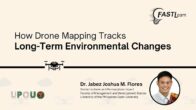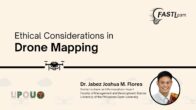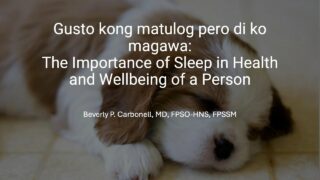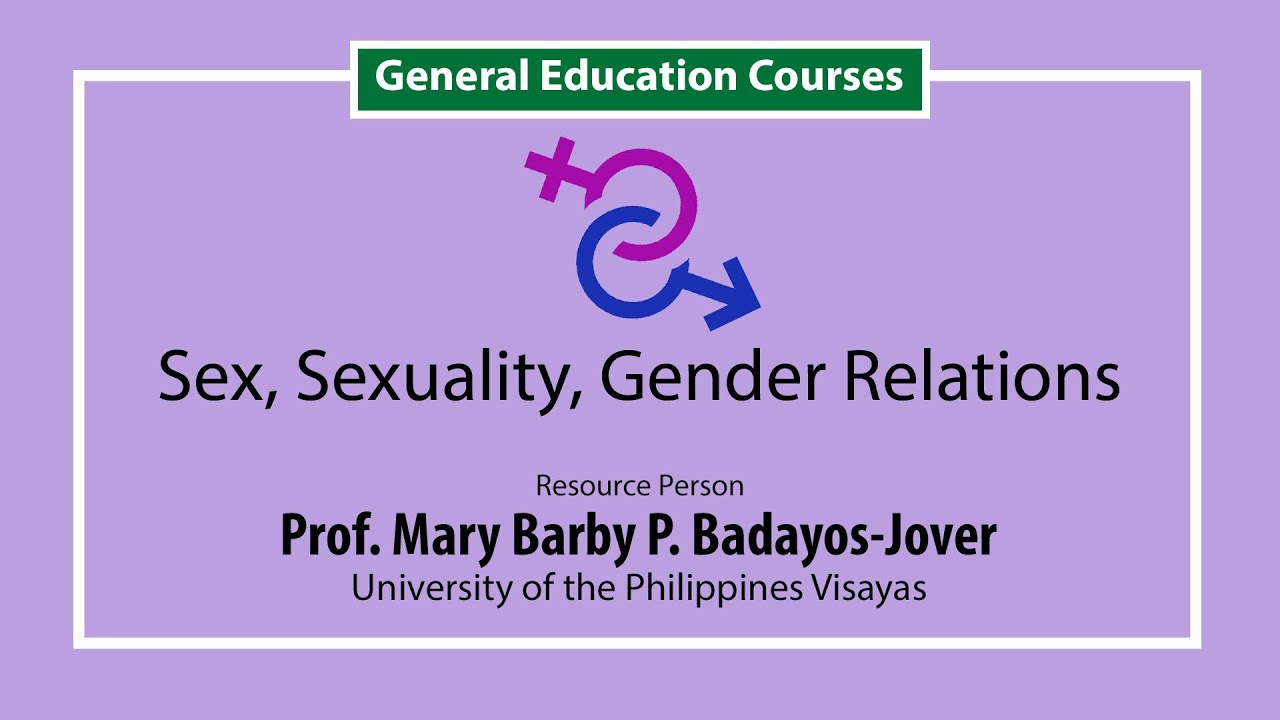So I am really grateful to be here. So just a background story, I’ll just let you know about my why and why I entered this program. So I’ve always believed that sustainability is a communication issue. It’s a communication problem with everyone. It’s not just about building or inventing technology that would solve this problems, but it’s about communicating it to everyone.
FMDS for this initiative. So for today, we are going to talk about SDG 2, the main theme. I’m going to talk about a certain aspect of diets when it comes to voting and addressing SDG 2. Now let’s talk about a certain type of diet that will really help eliminate or reduce climate change.
So first things first, why do we need to change our food systems? So I’ll give you five global answers for today. Sorry if I’m going to bombard you with statistics, but let me just explain why we really need to change our food systems. So first things first, the first limitation globally is that malnutrition and obesity are only global problems.
So in the Philippines, one in every three Filipino children below five years old are suffering from stunting. So that’s the case in the World Bank. And then malnutrition kills 95 Filipino children every day. And statistics tells us that 27 out of 1000 do not get past their fifth. On the other hand, when it comes to statistics, when it comes to obesity, a lot of people aged 20 to 59 are suffering from obesity. So they have high probabilities of obesity. The next limitation is our food globally is too rich in fat, sugar, salt, and wheat. So what is the result of it? So first is it is there’s an increase in greenhouse gas emissions and at the same time higher risk of heart disease. So let me just show you another statistics.
So when you talk about global greenhouse gas emissions around the world, 24 studies show, ten years ago, the 24% of it came from agriculture, forestry, and other land use. On the other hand, when we look at the leading cause of death in the Philippines, you will see that it is heart diseases. So it’s really alarming for us. The third limitation when it comes to our food system, our food is actually less diverse. I think this was a study in University of California wherein they showed that the top five foods around the world came from five plants already. Top three is wheat, rice, and corn. And when you look at the animal species that we consume, there are only five in the study and the top three are cattle, pigs, and chicken, one third of the food waste. So in the Philippines, 1,717 metric tons of food are wasted every day. So that’s really alarming. And the fifth limitation of our global food system is that our natural resources are really under pressure.
So if you look at water scarcity around the world, so these are the top locations here around the globe. And you can see that in 2014, this is how much water spent on agriculture. So most of our water resources are really consumed by the agricultural sector. And on the other hand, if you look at soil fertility in the Philippines, 11 to 13 million hectares of soil are considered degraded already and at least 2.2 million hectares suffered from insufficient levels of soil fertility. So that’s the latest data from the Department of Agriculture. To top it off, it’s estimated that we are just 7.2 billion right now, but it is estimated that we will grow around 9.8 billion by 2015.
If you think about it, are we going to be able to continue eating the same way? So definitely the answer is no. So in 2019, a group of I think 37 scientists came and debated and they actually introduced this type of diet. It’s called the planetary health diet. So you can Google it. What is it and how did it came up? But a lot of scientists have been studying on this and they were promoting this type of diet. Now what are the goals of this planetary health diet?
So the first one is actually to feed a world of population, the world population of 10 billion by 2050. So that’s the first goal of the planetary health diet. Number two is that to greatly reduce the worldwide number of deaths caused by poor diet. Number three, to be environmentally sustainable as to prevent the collapse of the natural world.
So what does this planetary diet health look like? So this is what they call a healthy plate. So here, 50% is actually fruits and vegetables. Next is wheat, like potatoes, sweet potatoes. And then plant protein is also important. The least is actually sugars, different types of sugars and leis. So what is the difference of this compared to other diets?
So this one actually considers the food system and also the trade-off when you eat a certain type of food. So for example, another study in the University of California tells us that this is the number of grams that we really need to eat. So you can Google this. This is the actual number of grams that you need to eat. It’s actually per gram and you consider the calories as well. So generally the Planetary Health Diet will tell you just to consume 2,500 calories daily. So that’s their benchmark.
So as mentioned, I told a while ago that planetary health diet considers trade-off. So I’ll give you an example. So this is another study in the University of California. They actually study the emissions between the agricultural sector versus the emissions of all of the transportation sector around the world, with the United States, the United Nations, they were able to say that 10 years ago that the total human cost greenhouse gas emissions is actually, they are just the same. It’s at 14%. So imagine, all the emissions on transportation, it’s just the same with the agricultural sector. So imagine those types of trade-offs. So why?
Why is it that agriculture is really number one polluter? So first is the grains that they eat, the livestock that you raise. So we can get in the cattle and so on. Instead of feeding people, we’re feeding them. Number two, cattle are really gaseous animal. So their methane, it’s really very potent compared to carbon dioxide and then the fertilizers. So that’s why agriculture is one of those biggest factors to climate change. Next is I want to show you another study. So it actually considers the trade-offs. So here, when you look at, when you eat a piece of meat, let’s say nine ounce of meat, they say you are, you consume 330 grams of carbon emissions already.
It’s the same as three miles of driving a car. So it’s really very important to consider when we talk about planetary health diet, it’s really very important to consider the trade-off between what you eat. So for example, if you eat, this is your carbon emissions when you eat meat versus this is the carbon emissions when you eat fish. And at the same time, this is the carbon emissions when you eat meat. This is the carbon emissions when you eat and at the same time, this is meat, this is the carbon emissions when you eat vegetables. And let’s say this is what you eat when you eat, this is what you consume when you eat meat and this is your carbon emissions when you eat lentils.
So another study will also tell you, if you just follow the Mediterranean diet, I’m not really sure if you’re following a certain diet, but if we follow, if we all follow the Mediterranean diet, we can reduce global warming to 15%. But sadly, that’s not going to happen because of our meat preferences. So the doctors will just tell us to eat three to four ounces of milk. So I’m not advocating for pure vegetables, but proper intake of meat is really very crucial. So that’s exactly your pound size. So you just need to consume that much of meat when we talk about the planetary health diet. So what do we need to do to be able to achieve or to be able to get everyone into that planetary health diet? So first, when you talk about food transformation, you need partnerships, collaborative efforts among multiple stakeholders.
So it is important to shape shared narratives rooted in scientific evidence and presented in ways that resonate with people’s aspiration and thereby encouraging the adoption of alternative dietary choices. So where does social enterprise enter? So first things first, let’s see the nature of social enterprises. So I can summarize that into two enterprise, they strive to balance the pursuit of a social mission aimed at fostering sustainable social impact with the establishment of financially viable ventures. So they really balance mission and the business side of it. Number two, social entrepreneurs, they are naturally draw, they operate within tight resource constraints that has driven them to innovate and develop economical solutions. Their focus lies on creating efficient, affordable, and cost-effective solutions for the social needs. So those are the two important key characteristics of why social enterprises can really help us adapt to that planetary diet.
So in the Philippines, this was a study by the British Council in 2017. Statistics tell us that social enterprises engage in the agricultural sector. That’s their biggest engagement. That’s 19% out of all the sectors that was included in the survey. And also, if you look at their study, their major stakeholders, one of them are farmers and the local community.
So social enterprises really play a big role in this. And when it comes to their social mission or social objectives, you can see that they are also supporting small producers in the agricultural value chains. And at the same time, addressing food security and agricultural development. So I’ve always believed that when you really talk about development, you have to think global and act local. So I’ll just show you two examples in the global space. So this is one innovative social enterprise because here in the Philippines, we address the surpluses in agriculture.
But in other countries, what they really do such as a social enterprise like Taylor food, they build coalition among local entrepreneurs, farmers, industrial manufacturers and other institutions to bring food to people living into poverty. So that’s the difference. Instead of us, instead of consumers buying it, they deliver it to those poor people. So that’s just how their social enterprise works. And at the same time, in India, there’s another social enterprise there in which they partner up with mothers and talk about nutrition. So to be able to address malnutrition so they partner up with mothers, they educate the mothers to be able to do that.
So what are the existing opportunities in the social enterprise state? This is a program by the National Academy of Science and Technology. It’s called Feeding Metro Manila by 2050. So it actually was designed to really help people adapt to the situation, planetary health diet. So there’s a movement right now using this group of people to be able to help and they are pushing for social enterprises and new business models to be able to address the planetary health. So another key consideration, if you look at the statistics that I showed you a while ago, a lot of people are obese with this age range.
So you can say that a lot, and if you look at compared to British Council, you can also see that a lot of social enterprises involve a lot of young people. So in this case, you know that there is an opportunity to be able to discover new collaborations, especially with the young ones, and especially that they are the ones who are in this problem. So I think right now in UPLB, there’s another department that has been addressing this issue. And around the world, they are also developing apps in which you can see the food choices and also the grams. You can monitor the grams and also the type of food that you eat. So again, this is another opportunity for those young people who really want to contribute to climate change. So here I’m still waiting for a social enterprise that would create something like this.
So if you think you are helpless in combating climate change, I will request you to think again. First things first, you are what you eat. And at the same time, food can fix climate change. So thank you for listening.

























